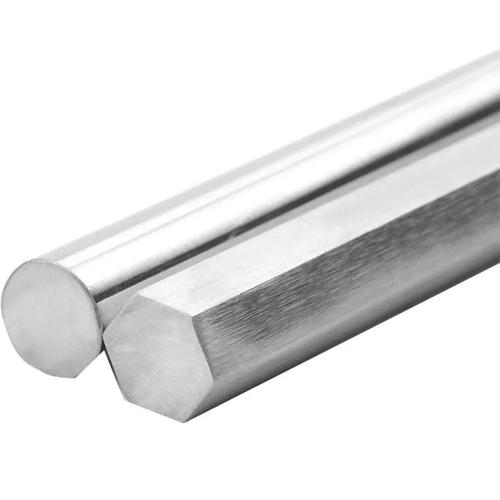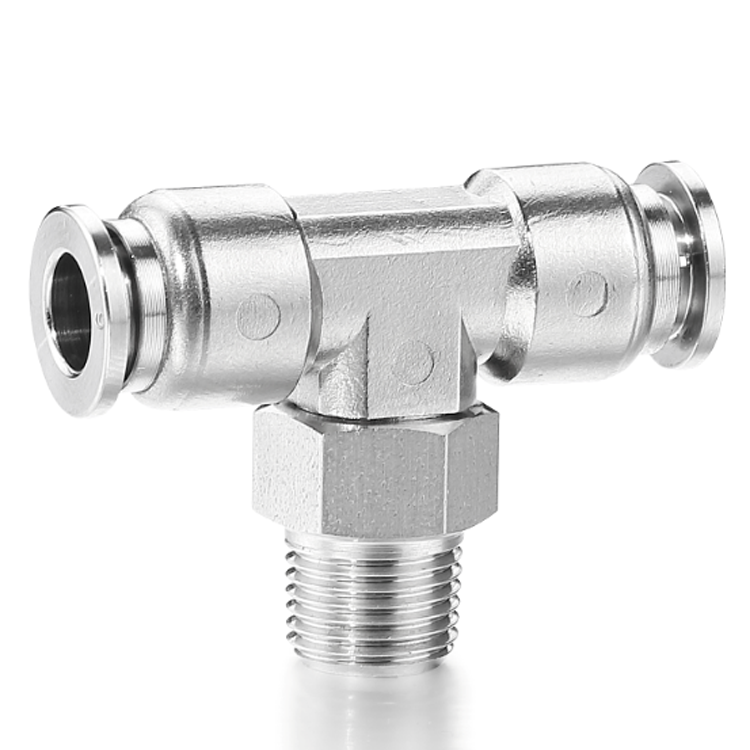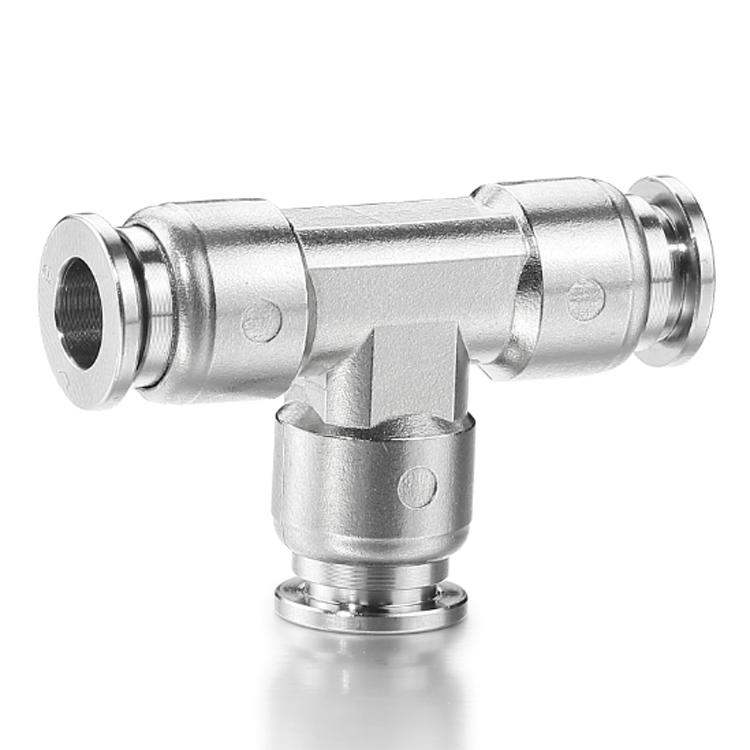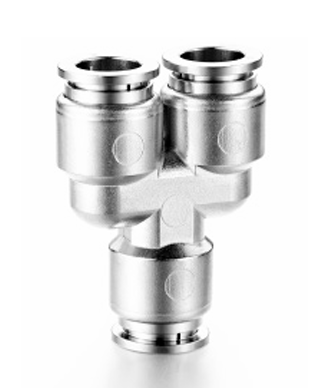When it comes to pneumatic systems, the choice of fittings is crucial for ensuring efficiency and safety. One of the most frequently asked questions in this domain is: Do stainless steel fittings rust? This question is not just a matter of semantics; it has real implications for the longevity and reliability of your systems. Understanding the properties of stainless steel, the mechanisms of corrosion, and the best practices for maintenance can empower you to make informed decisions that enhance the performance of your pneumatic applications.
Table of Contents
ToggleWhat is Stainless Steel?
Stainless steel is an alloy primarily composed of iron, chromium, and varying amounts of other elements such as nickel and molybdenum. The defining characteristic of stainless steel is its chromium content, which typically ranges from 10.5% to 30%. This chromium forms a thin, passive layer of chromium oxide on the surface of the steel, which acts as a barrier against moisture and oxygen, the two primary agents of corrosion.
Grades of Stainless Steel
There are several grades of stainless steel, each with unique properties that make them suitable for different applications. The most common grades used in fittings are:
- 304 Stainless Steel: This is the most widely used grade, known for its good corrosion resistance and formability. It is suitable for a variety of applications but may not perform well in highly corrosive environments.
- 316 Stainless Steel: This grade contains molybdenum, which enhances its resistance to pitting and crevice corrosion, especially in chloride environments. It is often used in marine applications and chemical processing.
Understanding these grades is essential for selecting the right fittings for your specific application, as the wrong choice can lead to premature failure and costly repairs.

How Does Corrosion Occur in Stainless Steel?
Corrosion is a natural process that occurs when metals react with their environment. While stainless steel is designed to resist rust, it is not entirely immune. Several factors can contribute to the corrosion of stainless steel fittings:
Environmental Conditions
The environment plays a significant role in the corrosion of stainless steel. High humidity, exposure to saltwater, and acidic or alkaline conditions can accelerate the corrosion process. For instance, in coastal areas, the salt in the air can lead to pitting corrosion, especially if the fittings are not properly maintained.
Mechanical Damage
Mechanical damage, such as scratches or dents, can compromise the protective chromium oxide layer. When this layer is disrupted, the underlying metal becomes exposed to moisture and oxygen, making it susceptible to rust. This is particularly concerning in applications where fittings are subject to frequent handling or vibration.
Poor Maintenance Practices
Neglecting regular cleaning and inspection can lead to the accumulation of contaminants that promote corrosion. Dirt, grease, and other residues can trap moisture against the surface of the fittings, creating an environment conducive to rust formation. Regular maintenance is crucial to ensure the longevity of your fittings.

Are All Stainless Steel Fittings Rust-Proof?
It’s a common misconception that stainless steel fittings are completely rust-proof. While they are highly resistant to corrosion, they are not invulnerable. The degree of rust resistance varies among different grades of stainless steel.
For example, 304 stainless steel is suitable for many applications but may not perform well in highly corrosive environments. On the other hand, 316 stainless steel, with its higher nickel and molybdenum content, offers superior resistance to rust and is often the go-to choice for marine applications or chemical processing.
The Role of Passivation
One important aspect of stainless steel that contributes to its corrosion resistance is the process of passivation. Passivation involves treating the stainless steel with an acid solution to remove free iron and other contaminants from the surface. This process enhances the formation of the protective chromium oxide layer, further improving the material’s resistance to rust.

Signs of Rust on Stainless Steel Fittings
Identifying rust early can prevent more significant issues down the line. Here are some visual indicators to watch for:
- Discoloration: If you notice any dark spots or discoloration on your stainless steel fittings, it could be a sign of rust.
- Pitting: Small, localized areas of corrosion that appear as tiny holes or pits on the surface.
- Flaking or Peeling: If the surface of the fitting starts to flake or peel, it’s a clear indication that corrosion is occurring.
Regular inspections are crucial. Make it a habit to check your fittings periodically, especially in environments prone to corrosion.
Preventing Rust in Stainless Steel Fittings
Prevention is always better than cure. Here are some best practices to keep your stainless steel fittings rust-free:
Proper Installation
Ensure that fittings are installed correctly to avoid stress points that could lead to mechanical damage. Follow manufacturer guidelines and use appropriate tools to prevent damage during installation.
Regular Cleaning
Use mild detergents and soft cloths to clean the fittings. Avoid abrasive materials that can scratch the surface. For environments with high exposure to contaminants, consider more frequent cleaning schedules.
Choose the Right Grade
Always select the appropriate grade of stainless steel for your specific application. If you’re unsure, consult with a professional who can guide you based on your environment and usage. For example, if your fittings will be exposed to saltwater, opt for 316 stainless steel.
Protective Coatings
In some cases, applying a protective coating can enhance the corrosion resistance of stainless steel fittings. These coatings can provide an additional barrier against moisture and contaminants.

What to Do If Your Stainless Steel Fittings Rust?
If you discover rust on your stainless steel fittings, don’t panic. Here’s what you can do:
- Assess the Damage: Determine the extent of the rust. If it’s superficial, you may be able to clean it off.
- Cleaning Methods: Use a mixture of baking soda and water to create a paste. Apply it to the rusted area and scrub gently with a soft brush. For more stubborn rust, consider using a commercial stainless steel cleaner specifically designed for removing rust.
- Replacement vs. Repair: If the rust is extensive and has compromised the integrity of the fitting, it may be time to replace it. Always err on the side of caution when it comes to safety. If you’re unsure, consult with a professional to evaluate the condition of the fitting.
Conclusion
Understanding whether stainless steel fittings rust is essential for anyone involved in pneumatic systems. While stainless steel offers excellent corrosion resistance, it is not entirely rust-proof. By being aware of the factors that contribute to corrosion, recognizing the signs of rust, and implementing preventive measures, you can ensure the longevity and reliability of your fittings.
Remember, the right maintenance and material selection can make all the difference in the performance of your pneumatic systems. If you have any questions or need expert advice on selecting the right fittings for your application, don’t hesitate to reach out. Your systems deserve the best!

